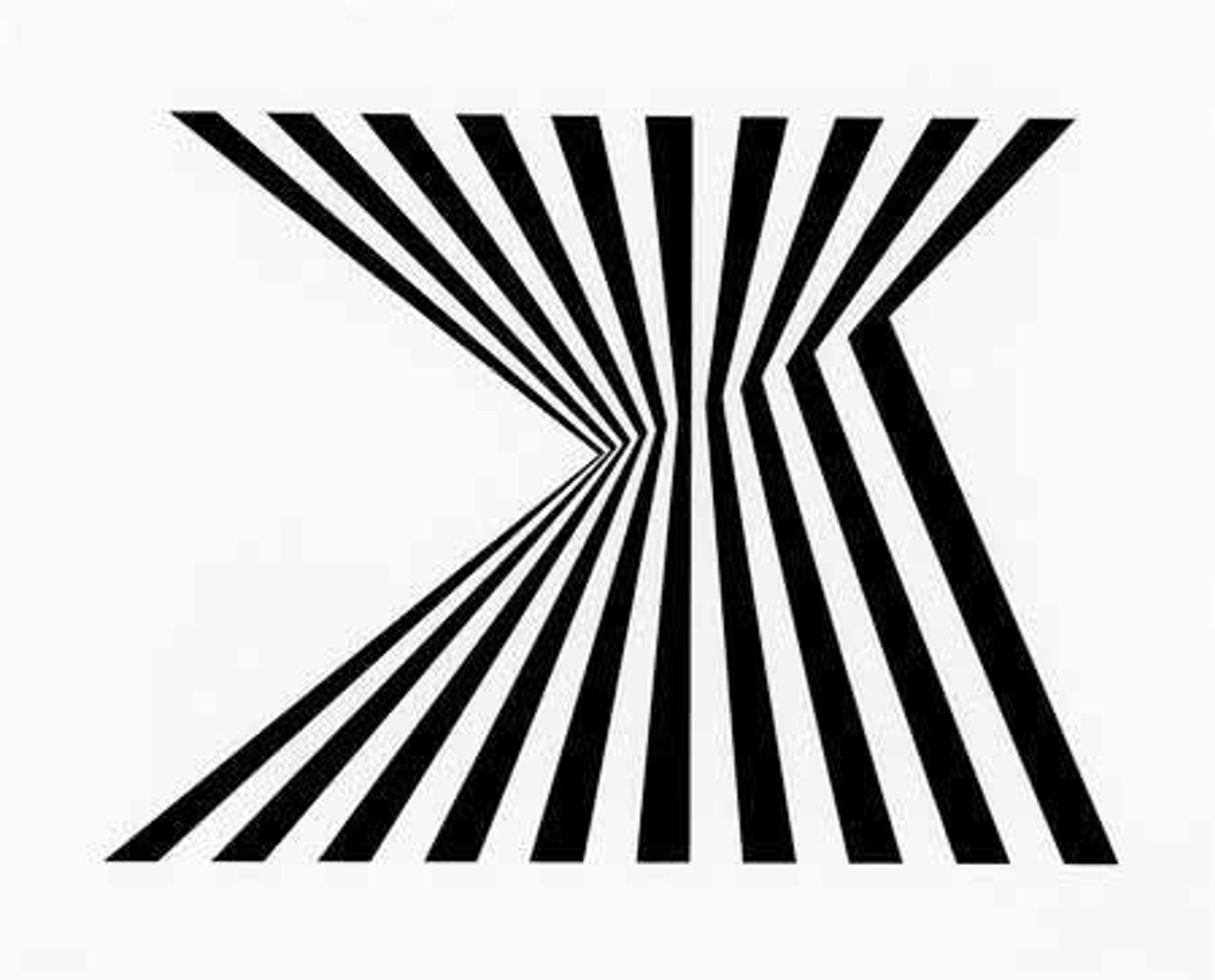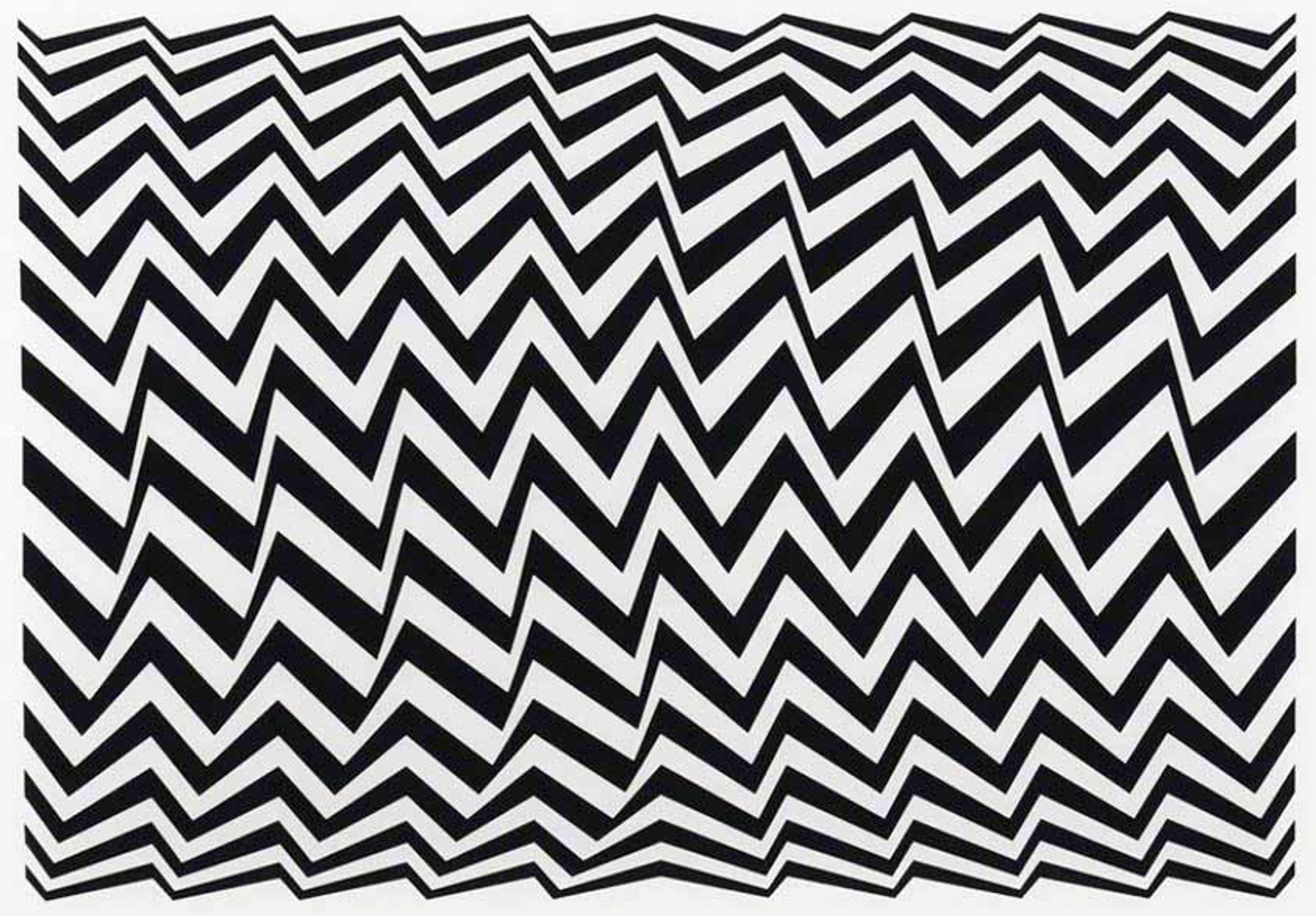 Fragment 1 © Bridget Riley 1965
Fragment 1 © Bridget Riley 1965
Bridget Riley
111 works
The Fragment print series was created by Bridget Riley in 1965. It is an example of work from her black and white period and represents her at the height of Op Art.
These works are about movement
 Fragment 4 © Bridget Riley, 1965
Fragment 4 © Bridget Riley, 1965Quintessentially Bridget Riley, her monochrome Fragment series captures the sense of movement she is able to create using only geometric forms.
This series captures the essence of Op Art
 Fragment 2 © Bridget Riley, 1965
Fragment 2 © Bridget Riley, 1965The series is significant as the artworks demonstrate the height of Op Art pioneer Bridget Riley’s practice and are instantly recognisable.
These works are about optical illusions
 Fragment 1 © Bridget Riley, 1965
Fragment 1 © Bridget Riley, 1965Despite being static works, they appear to be in motion: zig zag lines oscillate back and forth, in some prints circles seem to jolt around, and in others swirling spirals toy with your senses and produce an unsettling feeling. These Fragment prints are exemplar of Riley’s energetic, forceful compositions and optical trickery.
These works are about experimentation with simple shapes
 Fragment 3 © Bridget Riley, 1965
Fragment 3 © Bridget Riley, 1965Riley experiments with simple, structural units in her works, in varying configurations and colours, to explore the physical and psychological responses of the eyes.
Riley investigates how we see things in the world
 Fragment 5 © Bridget Riley, 1965
Fragment 5 © Bridget Riley, 1965Despite her compositions and colour combinations varying over the years, Riley’s motive has remained the same: to interrogate what and how we see things.
Riley was the first woman to win the painting prize at the Venice Biennale
 Fragment 6 © Bridget Riley, 1965
Fragment 6 © Bridget Riley, 1965The first woman to win the painting prize at the Venice Biennale in 1968, Riley endures as a pioneer of contemporary British abstract painting.
Riley is inspired by Georges Seurat
 Fragment 7 © Bridget Riley, 1965
Fragment 7 © Bridget Riley, 1965Riley is greatly inspired by Georges Seurat and his colourful compositions: “his work gave me a sense of the viewer’s importance as an active participant. Perception became the medium”.
Riley believes in the social function of art
 Untitled (Based On Blaze) © Bridget Riley, 1965
Untitled (Based On Blaze) © Bridget Riley, 1965Riley has a utopian vision of the social function of art. Regarding her artistic practice as an inherently social act, Riley believes the viewer completes the experience of painting, by perceiving the artwork.
These works form part of Riley's black and white period
 Untitled (Based On Movement in Squares) © Bridget Riley, 1965
Untitled (Based On Movement in Squares) © Bridget Riley, 1965Riley attained widespread recognition during her black and white period, which occurred between 1961 and 1966.
Riley's works were plagiarised
 Shade © Bridget Riley, 1992
Shade © Bridget Riley, 1992Visually intense and hugely popular, Riley’s works from this period were frequently plagiarised and mimicked in magazine and billboard advertising, and even on clothing.
